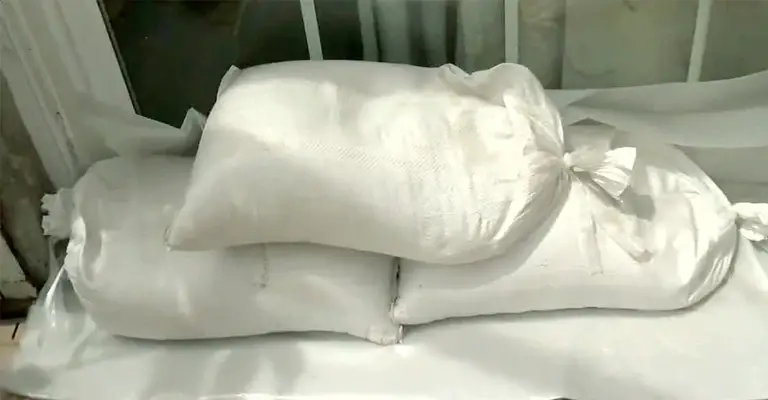When ladders and steps are not secured, they can float. Weighing them down is the best way to secure them in place.
There are many styles of pool steps, and while some are fixed in place, most are removable. Despite the convenience of storing steps or a ladder when the pool is covered for winter, their lightweight nature makes them prone to floating.
Securing floating steps is essential to ensuring a safe and easy entry and exit from the pool. Floating steps can be hazardous, so make sure they are secured.
How do you do it? Ensure that they are weighed down.
In order to simplify the task, we’ve put together a list of alternative weight-down methods for pool steps.
Why You Should Weigh Down Pool Steps
From your patio or pool deck, your steps or ladder might seem like the perfect solution for accessing your pool.
It is important to take additional precautions if you have steps or a ladder made of plastic because they can float if they are not properly secured.
When simply dropped into a pool, steps or ladders will tend to float to the top.
There will be some sort of weight needed to weigh down most of these steps that are made of buoyant plastic.
It may be possible to add weight to some steps with a built-in place or method, while other steps may require anchoring with an object.
You can solve this problem by making your own weights using waterproof items around your home and some sand.
It is important to weigh down pool steps to ensure safety since it reduces the likelihood that they will shift or float, which can cause accidents or injuries, explains Hubert Miles, NACHI’s certified pool and spa inspector.
By weighting the steps, you are ensuring they remain level and stable, making it easier and more comfortable to enter and exit the pool.
What to Use to Weigh Down Pool Steps
Here are some strategies for weighing down pool steps.
1. Use Sandbags

Alternatively, you can weigh down the pool steps with sand bags if you can’t put sand into them. To prevent movement, some pool owners place sandbags strategically around the step base, explains Hubert Miles.
It is important to use waterproof sand bags and to seal them tightly. There are specially designed bags and step weights available. To ensure a stable ladder, place them at the base of the ladder and add as much weight as needed.
2. Add Sand

It’s not uncommon for pool steps to contain compartments designed specifically to hold sand.
Make sure you check the manufacturer’s instructions to find out how much sand you will need – the amount can depend on the steps’ design – and where the sand should be placed.
The sand needs to be put into the holes using a funnel, then shaken to settle it.
3. Use Water

It is common for pool steps to be weighted down in order to prevent water from entering. Due to their increased weight, steps with a chamber that fills with water can provide more stability, says Hubert Miles.
The use of additional weighting techniques to further reinforce the stability of the steps is generally recommended as a means of ensuring maximum safety and longevity.
4. Waterproof Exercise Equipment

It is also possible to hold the steps in place with a plastic dumbbell set, which is hand sized. Plastic bungee cords or nylon ropes can be used to secure one on each side of the step.
Make sure the dumbbells are closed tightly if you need to fill them with sand. Additionally, you can use exercise weights that are strapped around your arms and legs to add bulk to your workout.
A few of these may be needed to provide the weight that keeps the steps from floating. Just as you would secure them around your arms and legs, they can be secured around the poles of the steps. Check to see if they are waterproof.
5. Make Your Own Sandbags

Make your own sandbags if the steps are not equipped with a place to store sand. On either side of the bottom step, you can place two hot water bottles filled with sand.
To prevent the sand from escaping, get a screw-cap type. Fill the bags only three-quarters full if you don’t want them to break when someone steps on them.
You can also tie nylon rope to the bottom step to secure two-liter plastic soda bottles filled with sand. Keep the sand contained by tightening the cap.
It is recommended that you change the plastic bottles once a month because they will get worn from all the activities that stir up the water in the pool. Plastic bottles can also be weakened over time by the chemicals in pool water.
It is possible to fill arm swim rings with sand and attach them to the steps of the pool by filling them with sand.
These items are very useful as anchors, but pouring sand into small air valves is time-consuming.
When you hold the air valve open with tweezers, you can insert the end of a small funnel and pour the sand through it. Just as a child’s arm would be secured around the step, these will do the same for the step.
Considerations
For anchoring, new pool steps have a hollow bottom step designed to hold sand.
Make sure there is a capped hole for holding sand. In most home stores, you can purchase the clean sandbox mixture that fills the bottom step.
Holding the steps down in a pool with a metal object is never a good idea. The water will become discolored as a result of the rust. Wood is not an option. Water will become clouded by soggy wood.
Holding an object underwater for an extended period of time requires a waterproof and heavy plastic item.
Should I Put Something Under My Pool Ladder?
You can protect the pool liner from damage by using a pool ladder mat, and you can also provide a non-slip surface that makes it safer for swimmers to enter and exit the pool.
It also helps keep the ladder in place when you are using it by keeping it in place on the mat.
How Can You Remove Steps Filled With Sand?
You will eventually want to remove the sand-filled steps from the pool.
In this case, even two people may have a hard time lifting the steps due to the weight that holds them down.
It is best to vacuum some of the sand out of the pool with a wet vac in order to make them manageable in weight and easier to remove.
The Bottom Line
The weight down of pool steps can be achieved with specially designed solutions. Additionally, you can make your own sand bags if you use waterproof containers and bungee cords or nylon rope to attach them to the steps.
Weighing equipment should always be tied securely and close to the steps of the pool for safety reasons.
Also, make sure they’re placed carefully so they don’t interfere with swimmers and don’t pose a trip hazard for people walking near the pool.







